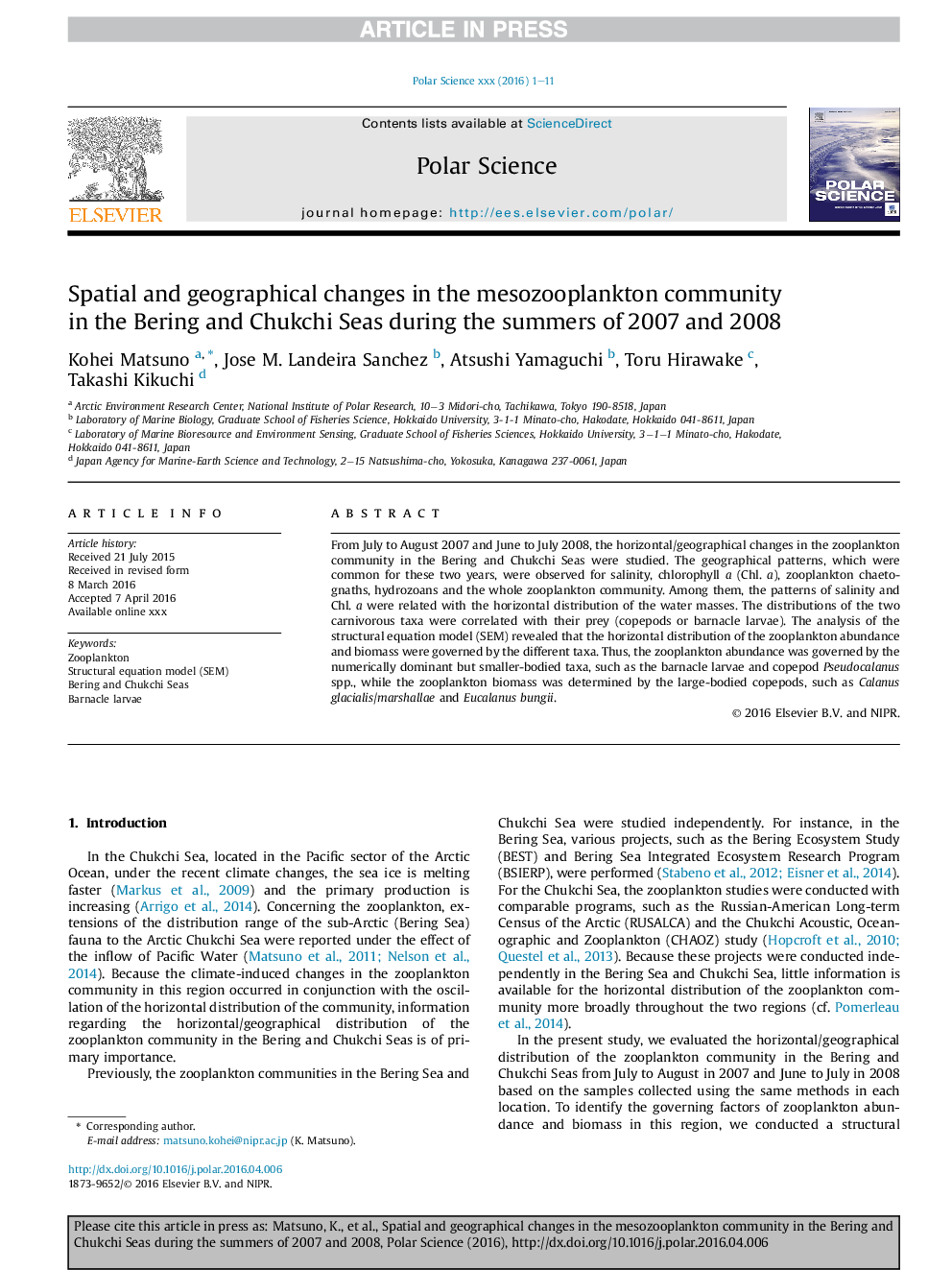| Article ID | Journal | Published Year | Pages | File Type |
|---|---|---|---|---|
| 5780592 | Polar Science | 2016 | 11 Pages |
Abstract
From July to August 2007 and June to July 2008, the horizontal/geographical changes in the zooplankton community in the Bering and Chukchi Seas were studied. The geographical patterns, which were common for these two years, were observed for salinity, chlorophyll a (Chl. a), zooplankton chaetognaths, hydrozoans and the whole zooplankton community. Among them, the patterns of salinity and Chl. a were related with the horizontal distribution of the water masses. The distributions of the two carnivorous taxa were correlated with their prey (copepods or barnacle larvae). The analysis of the structural equation model (SEM) revealed that the horizontal distribution of the zooplankton abundance and biomass were governed by the different taxa. Thus, the zooplankton abundance was governed by the numerically dominant but smaller-bodied taxa, such as the barnacle larvae and copepod Pseudocalanus spp., while the zooplankton biomass was determined by the large-bodied copepods, such as Calanus glacialis/marshallae and Eucalanus bungii.
Related Topics
Physical Sciences and Engineering
Earth and Planetary Sciences
Earth and Planetary Sciences (General)
Authors
Kohei Matsuno, Jose M. Landeira Sanchez, Atsushi Yamaguchi, Toru Hirawake, Takashi Kikuchi,
